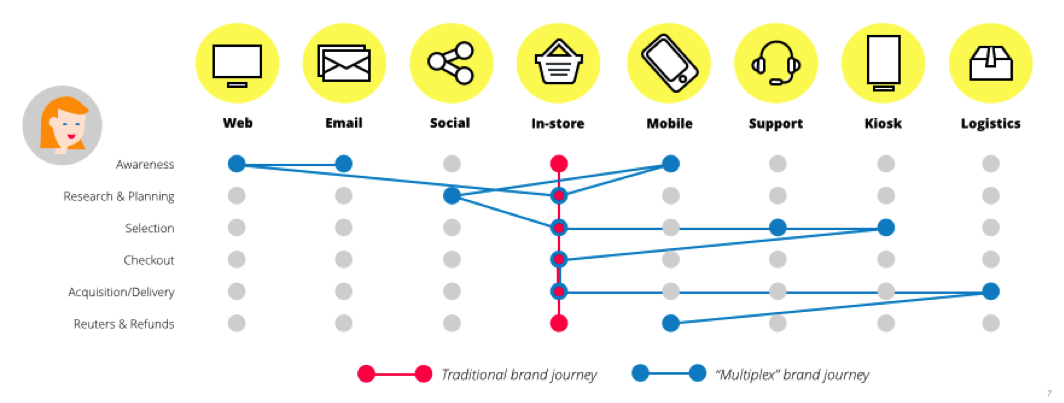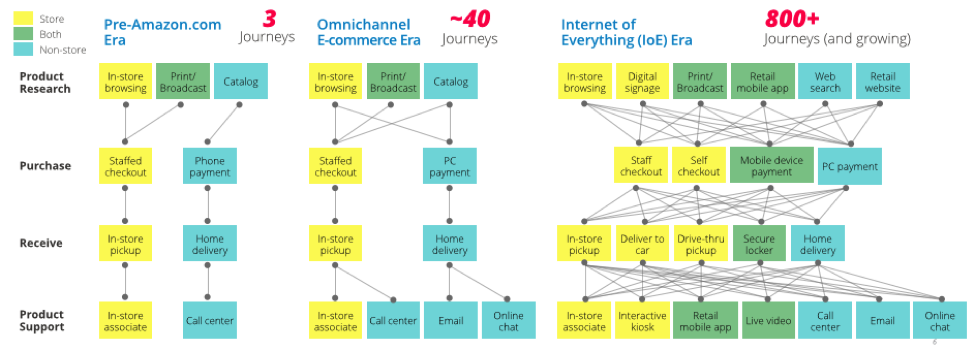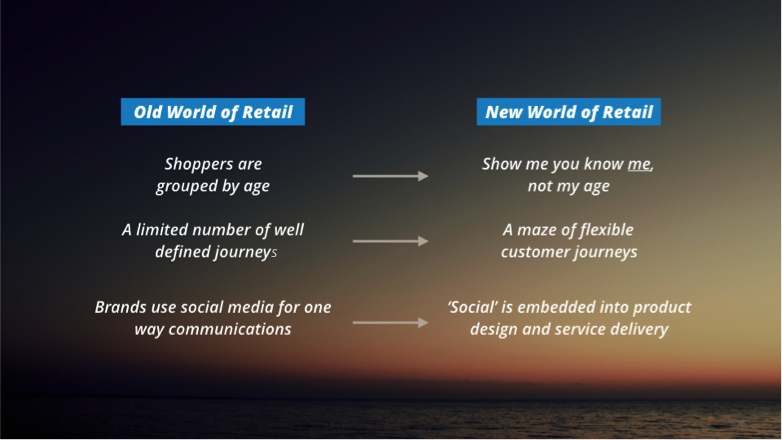
3 Retail Assumptions to Challenge for Humans of the Digital Age
Devices have changed the way we do things - from finding a life partner to choosing the best brand of liquid detergent to getting in touch with old friends. According to research by the Pew Center, 89% of cellphone owners said they had used their phones at the last social gathering they attended.
Devices have also become an extension of the mental self. The impact of so much time in the digital world is gigantic. Our attention spans are shorter, we crave validation in the form of likes, repins and retweets, and the appetite for on-demand everything has never been so high.
There’s no denying that the very act of “Googling it” has impacted something as simple as a conversation globally. The thoughtful banter that followed an inquisitive question 10 years ago is often made obsolete by the smart phone. Studies even suggest that the presence of a smart phone changes the nature of a conversation; participants keep the topics relatively light so they won’t mind being interrupted.
Assumptions that dominate the retail industry are built on conventional wisdom, essentially constructed for a different ‘type’ of person. Ones that weren’t swimming in swathes of endless information and infinite product choice. What was a great idea or innovative a few short years ago might be considered a basic expectation or backward now.

Retailers seeking to modernize and captivate shoppers with vastly different behaviors must build new tools, processes and structures to keep up with rapidly evolving expectations and preferences. Here are three key assumptions to challenge in the new world:
Assumption To Challenge #1 - Age Determines How, Where and What People Buy
Demographics have long been used to slot shoppers into categories, but age in particular is becoming less meaningful as we enter into what The Future Laboratory has dubbed a ‘Flat Age Society’. Simultaneously, shoppers are sprouting new habits that are more difficult to shove into a neatly boxed segment.

Source: Huffington Post
Tech has democratized the information available to people of all ages, so the line is no longer so distinct between a 25 year old shopper and a 50 year old shopper. The rise of customization and curation means brands are better positioned than ever to appeal to many shoppers on an individual level. Smart brands are catching on, too. Joan Didion is the face of Celine, 93 year old Iris Apfel was commissioned by One Kings Lane to sell her collection. Selfridges stood out from the tired millennial rhetoric with their ‘Bright Old Things’ campaign.
Gone are the days when millennials exhibited significant technological prowess compared to their Baby Boomer counterparts. The image of Boomers struggling to turn a computer on is dying and they’re fast becoming emoji-using, iPad swiping extraordinaires.
Assumption To Challenge #2 - Siloed Teams Can Deliver a Unified Shopping Journey
Customers now expect individualized value, they want to choose and buy products in a way that best meets their needs and preferences that change from minute to minute.
Yet too many retailers organize in silos. Store Operations have never spoken to the eCommerce or “digital” team, and the marketers have never met the store associates. This channel-centric model is problematic. Shoppers want to combine touchpoints in the way that suits them best. Needs and preferences are constantly in flux based on moments in the customer’s life; How much time do they have to make the purchase? Who are they trying to impress? Where do they need to go, and what do they need to do? What new technologies are they using? It is the the retailer’s job to cater to this ecosystem of micro moments.

The number of possible moments has exploded, blown up by our devices, sensors and better network technologies. This has vastly changed the way people behave. According to a report released by Cisco last year, in the “Internet of Everything” era shoppers will have upwards of 800 ways to experience the brands they interact with. Brands will not be able to keep up changing shopper expectations and behaviors under the channel specific model.

Assumption to Challenge #3 - Social Media is a Broadcasting tool
Social networks have added a new dimension to the way customers evaluate and consume products. More and more, shoppers evaluate a purchase based on its social cachet in addition to how it looks and what it does. Whether someone wants to be paint themselves as a wanderlusting, nonchalant twenty-something or a hard line workoholic; you can make a fairly accurate conclusion about their desired perception by meandering through their social personality. They’re more likely to buy something if the product or service can provide social value in addition to functional utility. Brands must now embed social news worthiness and social value when designing products, packaging and services. Social shouldn’t be a marketing afterthought, it should be a business mentality. There must be a trigger that makes an experience share worthy. Don’t tell people to take a picture and share, make them want to do it themselves by providing something unique, or striking a chord with their value set.

Above: Apple owns no social channels, yet Siri is shared profusely on social media because 'she' is funny and unique.
Think only brands that sell cutting edge clothing, Pinterest-worthy home decor or avant-garde consumer electronics stand a chance on social? Think again. Everything is becoming share worthy. People share to rack up social currency and express themselves. Consider the common mattress - once a mundane purchase - a wonderfully simple, premium product from Casper changed the game. A quick YouTube search for ‘Casper mattress unboxing’ reveals that the top 3 videos alone have over 300,000 views (yes, videos of customers taking their mattress out of a box). The slick box design and unique way the mattress springs out of its packaging make it worthy of even the most curated social profiles. The mattress company also has over 20,000 followers on Instagram. Shopping is no longer a purely transactional activity, but more a social game that has become more complex than ever before.
These cultural and behavioral shifts are happening at a rate never seen in history. Faster, cheaper, more connected, more intelligent devices are shaping human thoughts and behaviors. Like your smart phone, the conventional retail wisdom of how customers are understood requires an update.
A couple of months ago I was in a retail project where my client told me that they no longer use the word “shopper” because shopping is not the only goal of the brand relationship. How organizations perceive and value their customers can change everything in a business. In the digital age the retailers that challenge their key assumptions and transform their teams, processes and products to cater to these new homo sapiens will thrive.

Disclaimer: The statements and opinions expressed in this article are those of the author(s) and do not necessarily reflect the positions of Thoughtworks.














